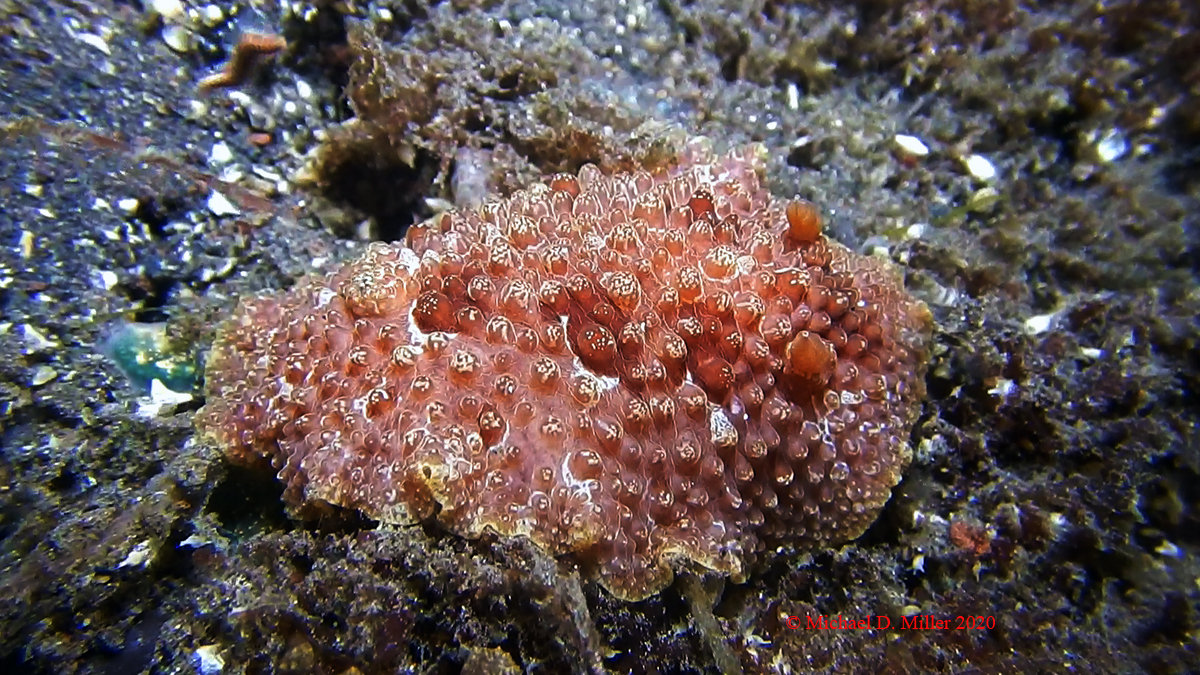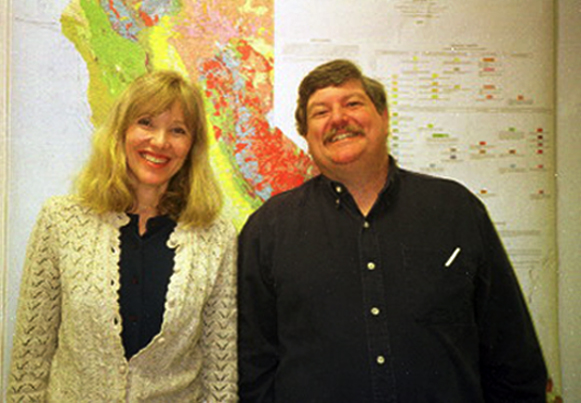 |
Carminodoris grandiflora
Image courtesy of WebmasterDive Site Seraya Secrets
Villa Markisa Dive Resort
Bali, Indonesia
Photo of Dr.'s Terry Gosliner and Shireen Fahey at the California Academy of Sciences
in Golden Gate Park, San Francisco, when Shireen was a post-doc (circa 2003).
 | Carminodoris grandiflora (Pease, 1860)
Dr. Terry Gosliner has lent some assistance today identifying this large dorid as a member of the family discodorididae, Carminodoris grandiflora. The specimen shown here is fairly plain compared to the average specimen which is quite mottled with brown on the notum. Like other members of the genus, it has large rounded dorsal tubercles. Characteristic on these tubercles are white spots and marks. This species is widespread in the Indo-Pacific and feeds on sponges. References: Fahey, S. J. & Gosliner, T. M. 2003. Mistaken identities: On the Discodorididae genera Hoplodoris Bergh, 1880 and Carminodoris Bergh, 1889 (Opisthobranchia, Nudibranchia). Proceedings of the California Academy of Sciences 54(10):169-208. Nudibranch of the Week Oct. 2003
Sammamish, WA 98074 Mar. 2020 Send Dave email at davidwbehrens@gmail.com |

Attention all you Sluggers, and you know who you are! The NSSI 2nd edition is available in ebook PDF and book form . The hard back version will become available Nov. 1st. Both will cost $65 (individually). You will need to jump through a few hoops to get the electronic version as pdf distribution is protected by Adobe ID!! Please read the following to enable reading your electronic purchase! This new 2nd Edition is updated and reorganized, including 185 new species. Among other features, the new edition includes additional photographs of species, an identification key, and an up-to-date classification reflecting the latest evolutionary relationships. The Indo-Pacific represents the largest expanse of tropical ocean in the world, stretching from the Indian Ocean coast of southern Africa and the Red Sea to the central Pacific of the Hawaiian Islands, Easter Island and the Marquesas. This region supports the most diverse marine fauna of any place in the world for most groups of marine organisms. The nudibranchs and sea slugs are no exception to this rule; there are about 3,000 described species of these organisms in the world and at least 40% of these have been found exclusively in the Indo-Pacific tropics. This book illustrates 2,138 Indo-Pacific nudibranchs and sea slugs, including many undescribed species.
|
